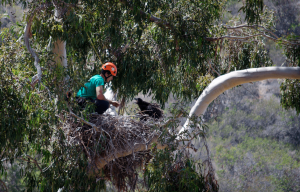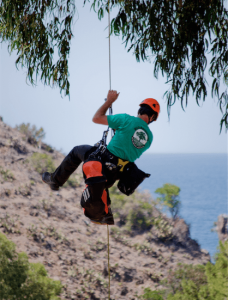
 DDT is usually the first pesticide that everyone can name, and for a very good reason. DDT was one of the first chemicals used worldwide to control insects and other pests. Developed in the 1940’s the chemical was used to combat malaria, typhus, and other insect borne diseases. Along with diseases it served as an effective tool to kill insects eating crops. The publication of Rachel Carsons Silent Spring in 1962 initiated widespread concern over the dangers of using the pesticide not only to the environment but as well as humans. The EPA in 1972 issued a cancelation on DDT due to its negative effects, however much of the damage had already been done. Surprisingly DDT is still used today in some African countries when dealing with malaria problems. One of the most notorious and well publicized effects of DDT however is the effect of the egg shells on birds.
DDT is usually the first pesticide that everyone can name, and for a very good reason. DDT was one of the first chemicals used worldwide to control insects and other pests. Developed in the 1940’s the chemical was used to combat malaria, typhus, and other insect borne diseases. Along with diseases it served as an effective tool to kill insects eating crops. The publication of Rachel Carsons Silent Spring in 1962 initiated widespread concern over the dangers of using the pesticide not only to the environment but as well as humans. The EPA in 1972 issued a cancelation on DDT due to its negative effects, however much of the damage had already been done. Surprisingly DDT is still used today in some African countries when dealing with malaria problems. One of the most notorious and well publicized effects of DDT however is the effect of the egg shells on birds.
 The byproduct in DDT called DDE which bio accumulates in many bird species, even our very own bald eagle. The chemical causes the egg shells of these birds to become very brittle and they are actually crushed under he weight of the female when she is trying to incubate her eggs. This caused populations of many birds in the country to sharply decline. Buy the late 50’s all the breeding eagles on our island were killed or had disappeared. The main reason for the decline can be attributed to an estimation of 53 million liters of DDT dumped into the ocean at a site a few miles northward of Catalina. The toxin accumulates in fish and other small animals which are in turn eaten by the eagles. With the ban of DDT in the US the eagle populations have made a dramatic rebound.
The byproduct in DDT called DDE which bio accumulates in many bird species, even our very own bald eagle. The chemical causes the egg shells of these birds to become very brittle and they are actually crushed under he weight of the female when she is trying to incubate her eggs. This caused populations of many birds in the country to sharply decline. Buy the late 50’s all the breeding eagles on our island were killed or had disappeared. The main reason for the decline can be attributed to an estimation of 53 million liters of DDT dumped into the ocean at a site a few miles northward of Catalina. The toxin accumulates in fish and other small animals which are in turn eaten by the eagles. With the ban of DDT in the US the eagle populations have made a dramatic rebound.

In the early 1980’s the Institute for Wildlife Studies began its long term bald eagle restoration program on the island. They began reintroducing eagles to the island, eggs were taken from the nest after they had been laid and incubated off site so they would not get crushed. When the chicks hatched they were brought back and put in their original nest where their parents accepted them back. In 2007 biologist took a chance and let two pairs of eagles lay their eggs and incubate them without the help of humans, and it worked! Today all of Catalinas eagles lay, hatch, and care for all of their own eggs. The conservancy says the eagles now are fully healthy and here to stay, to the great excitement of everyone who visits the island and gets to see one fly overhead. It just makes me want to start chanting USA! USA! USA!


